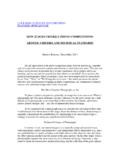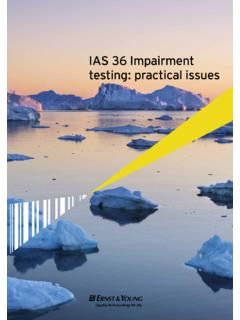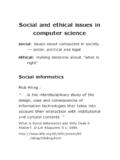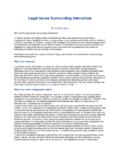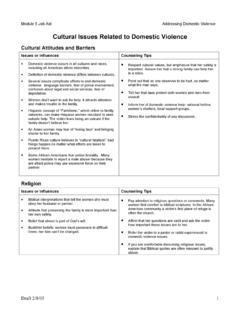Transcription of Ethical Issues in Photography - IconicPhoto
1 CLICK HERE TO RETURN TO IconicPhoto FEATURED ARTICLES PAGE Six Cases for Discussion: Ethical Issues IN Photography Shutter Release, April 2010 Ethics are principles reflecting the values of a society guidelines for its members to treat each other fairly according to accepted ideals. Needless to say, reality often differs markedly from the ideals, but civilizations, organizations and informal groups of all kinds have understandings of Ethical conduct. Within a group, ethics may be broadly accepted in general terms, but Issues arise in their interpretation and application. Ethics can be especially contentious with changing times and diversities of culture and technology.
2 In the practice of Photography , Ethical Issues tend to arise over the nature of creativity, representation, ownership, profit and service, often confused by the application of new technologies and exacerbated by cultural preferences or political ideology, and of course individual personality and ambition. This article illustrates six contemporary Ethical questions of Photography , and suggests resolution ( , IMHO in my humble opinion). Case #1: Image of a Tragedy for Sale Situation: A devoted photographer an aspiring professional or passionate artist always carries a camera at the ready. The photographer happens to witness a horrific catastrophe, and is the only person to capture the event on film.
3 A media company, eager to acquire the images for broadcast, offers the photographer $500,000 for the images and copyrights. Question: Is it ethically wrong for the photographer to accept the large sum, because it would mean profiting from awful misfortune? Discussion: The appearance of benefiting from tragedy often gives rise to controversy. In the case of a photographer receiving payment for recording calamity, opposing viewpoints appear related to perspectives on profit. Profit as Legitimate Reward People who see profit as a fair return for providing a valued service, at least in principle, would tend to argue the photographer is not profiting from a tragedy, but is providing a valued service in communicating the event.
4 And that the photographer should not feel guilty about receiving the money, even a large sum that can be said to reflect its information value. A plausible line of reasoning is that the photographer, having devoted much of their life to the craft, can be seen as receiving a lump-sum payoff for having been out with their camera and ready to record history when it happened (and presumably in a high-quality, technically proficient manner.) A secondary consideration is that a large part of any extraordinary one-time payment would be paid out in taxes, benefiting society as a whole. Profit as Excess On the other hand, people who are innately suspicious of profit or its substantial temptations of human weakness, and concerned about its magnitude or broader questions of social justice, may disparage a substantial payment to the photographer.
5 From this perspective, as a matter of equity, the victims or their families should have priority entitlement to any flow of funds resulting from the tragedy. Another objection could be that the photographer should not be so amply rewarded for the quirk of being at a certain place at a certain time in connection with a tragedy. The answer may be further blurred by the circumstances of the photographer. The argument is strongest for compensation if the photographer is a monetarily poor, struggling artist, having worked full-time at the craft with only marginal return. In my judgment, a solution would be to share a proportion of any after-tax windfall with those affected by a tragedy that I would chance to photograph.
6 The Diane Arbus Analogy The question of payment for an image of misfortune is somewhat similar to that raised by photographic ethicists about the work of Diane Arbus (see Diane Arbus Revisited, Shutter Release, February 2004). Arbus s career, which was a financial struggle, depended on images of people at their worst: emotionally or physically challenged, in red-light districts, or otherwise down and out. Yet Arbus reportedly always asked permission of her subjects before photographing them. She purported to show empathy for her subjects, proclaiming that society needed to see what it shuns. For these reasons, a slight majority of photographic critics vindicated her in a new round of publicity in 2003-2004 in connection with a retrospective of her work.
7 Case #2: Props Situation: In an actual case, a renowned, talented landscape photographer was arrested and fined after fires he had set as a backdrop for night Photography grew out of control and caused damage to natural formations at Arches National Park in Utah. Question: Nobody disputes the photographer was wrong to have started fires when it was clearly against park rules, and contrary to good sense. But what if fires were allowed, and could be safely controlled? Is it Ethical for photographers to add props to a scene to make it appear more dramatic or photogenic, when in fact the scene never really looks that way? Answer: Searing tongues of flame as a backdrop would make even as dull a space as my front lawn look spectacular.
8 Yet such an image would be a total dramatization. As a rule, Photography for any purpose that purports to represent how a place looks should not have props, because it is deceptive: not the reality of its normal appearance. On the other hand, props are acceptable for purposes of abstract art (which as a rule excludes landscape Photography ) or when it is otherwise clear to the majority of viewers that the scene has likely been spiced up with special effects. Case #3: Using Another Photographer s Perspective Situation: At a gallery show, you come upon a highly intriguing image of a building taken from a particularly artistic perspective. You imagine doing the same, possibly under different lighting conditions, and using different equipment, but essentially an identical composition.
9 From the title, you research the subject, find the location, and take your version of the scene. In a moment of reflection, you admit to yourself that even had you been aware of that building, you probably would not have imagined taking it from the particular perspective you are emulating. Still, reasoning that the building is there for anyone to photograph, you enter the image in a Photography competition, and it easily wins. Question: Is it plagiarism to copy the artistic perspective of the original photographer? Answer: The building, indeed, is there for all to see and photograph. Yet in this situation, a photographer copied the exact perspective that was creatively devised by another photographer.
10 By exhibiting the photo without crediting the original photographer, the second photographer gets credit for the originality of the first. Whether or not the second photographer has improved the image, the conscious replication of the original perspective is tantamount to plagiarism, in my view, if the image is publicly displayed and the original photographer not given credit. Moreover, selling the image would be wrong, in my view, because it would be profiting from the creativity of another. Case #4: Digital Improvement of Substance Situation (1): An architectural photographer digitally removes a distracting street sign and streetlamps from an image of a new building intended to publicize the structure in an architecture magazine.
